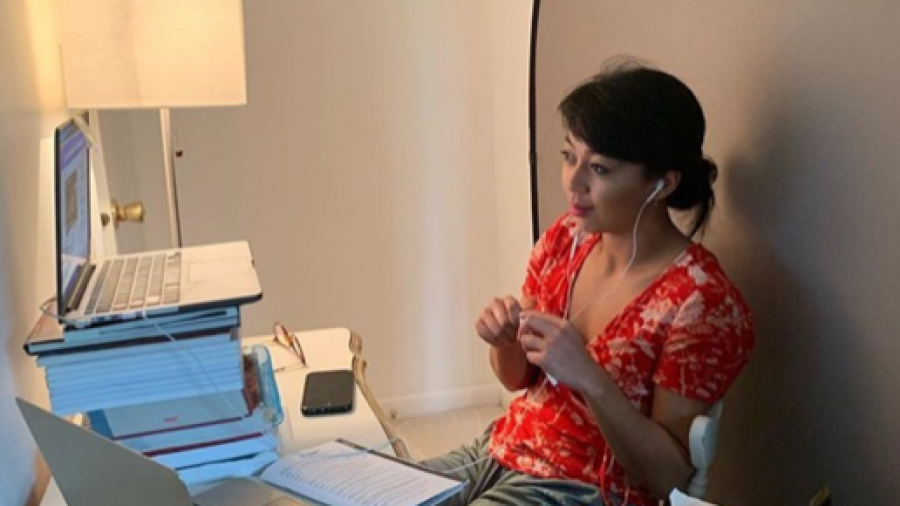Two weeks ago, I received an offer that would have symbolized the culmination of my first year as an artist in New York. Three days later, I was back home in Maryland fleeing COVID-19-related shutdowns in NYC, and three days after that, I got an email that the show had been indefinitely postponed.
Propelled by this momentum of anxious energy, I imagined, created and hosted a virtual benefit concert for Feeding America. One hundred and one artists from four continents felt the same way and volunteered their enormous talent; we were streamed by five thousand audience members who donated the money for sixty thousand meals. And all this came together in five days.
This is a tactical, four-step blueprint for you: the person looking to exact change and make an impact in your community even if, like me, you’re broken and broke, alone, and you’ve lost quite a bit.
Step 1: Identify the Problem
As artists, coronavirus has severed access to our community, our audiences and our paychecks. However, I’ve been blessed by parents who welcomed me home with loving arms and who will help support me until this storm passes. The day I left the city, NYC announced city-wide school closures, and I became strikingly aware of my privilege—how unfair is it that I get to go home to escape from the world when so many people go into the world to escape from home? Why am I lucky enough to eat whenever I want, when many school children won’t receive even one stable meal a day because their schools had to close their doors?
The Problem: Due to COVID-19 related school closures, millions of children are not guaranteed their only reliable meal of the day.
Step 2: Identify What Would Solve It
The answer will almost always be money. But what exactly keeps people from contributing to a worthwhile cause?
One obstacle, especially in this moment of history, is feeling overwhelmed. With simply too many problems that need fixing, and too much aid needed to actually fix them, how much of a difference could my contribution make?
The other obstacle is that naturally, people want to make a human connection when they do good. There’s emotional satisfaction in looking another human being in the eyes and knowing you did something to make their life a little better. That’s good, and that’s natural. But seeking the solution that comes with that kind of emotional gratification can actually be dangerous: though offering to bus hot meals to homebound people with underlying conditions is filled with good intentions, it may actually perpetuate the spread of COVID-19.
Money is sterile and faceless, but in the hands of nonprofits that know how to use it, donations are the surest way to make a dent in the problem we identified in step one.
Conclusion: in order to donate, potential donors need to feel 1.) the importance of their gift, and 2.) some kind of emotional satisfaction.
Step 3: Ask “What Do I Have?”
While I don’t have money (this isn’t hyperbolic, by the way), I am rich in other currencies. I’m a performer, and I also have a diverse network of talented artists, many of whom are already sharing their work online for free.
What I Have: a voice and a network.
Step 4: Identify, What Do I Need?
When artists live-stream performances and then express desperation for viewers or donations, the reason they aren’t getting money or attention isn’t that they aren’t talented. The problem is that technology is democratizing— why would someone pay attention to a film project by one person they’ve never heard of, when instead they could watch talk show hosts streaming their shows from their own houses, a Met HD broadcast, or take an online class at Yale (yes, these are all things that are accessible online for free due to COVID-19)? Talent alone doesn’t add value, so talent alone won’t be rewarded by viewers and money.
Entrepreneurs know that money isn’t just a tool— it’s a manifestation of a mindset. And artists know that it’s possible to use our craft to engender emotions and change mindsets. So what if we could 1.) make donors feel important by connecting them to a larger network of people all supporting a larger financial goal and 2.) give donors a sense of emotional connection by offering them art worth watching?
In the end, this benefit marathon became a global event when I realized this: artists have emotional currency and donors have financial currency— and both are necessary to make a dent in national youth hunger due to Coronavirus school closures. And what we, artists and donors, need in return is the same at the heart of it all…
What I Need: I am alone, and I need to feel connected. I am sleeping in my childhood bedroom, and I need to feel like I have some sort of power over my circumstances. In the wake of what would have been a massive step forward in my career that instead crumbled beneath my feet, I need to feel like I matter.
CEO Rachel Hollis says that the professionals who will thrive during this time are the ones who look at this outbreak and ask “how can I make this [work] for me?” I think that anyone searching to make a difference in their community should also be asking, “how can I make this work for them?”
To make a donation to Feeding America, click here.

Alexandra Palting (she/her/hers) is the founder of The Hustling Creative. She holds a BM from the University of Delaware and professional certificates from London’s Royal Academy of Dramatic Art and Harvard Business School. She has been engaged as a speaker at dozens of universities and conferences across the country. Her clients consist of artists seeking to convert their craft into a meaningful, creative, and lucrative business. Contact her here.
To read the full, original article on her blog, click here.

